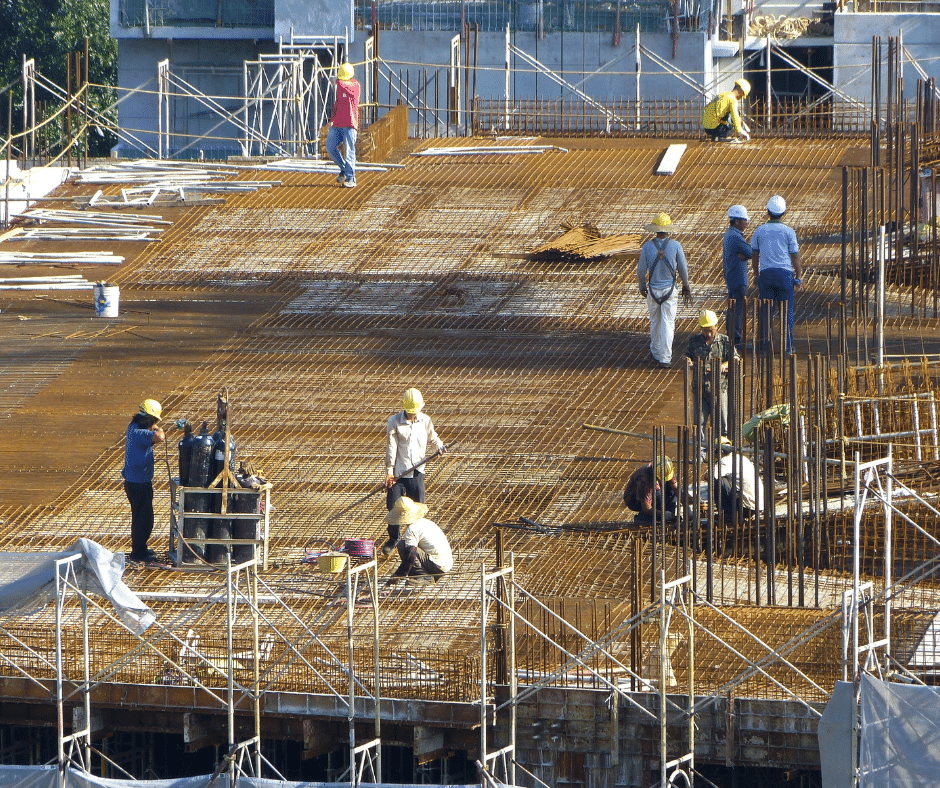Any project in modern architecture that wants to last a long time needs a solid and secure base. Concrete slabs are the most reliable and widely used foundation among the many classifications. Concrete slabs present strength, solidity, and resilience to environmental requirements for applications in residential, commercial, and industrial buildings. What, though, makes them the foundation of contemporary buildings? Concrete slabs are explored in this article, along with their importance, benefits, and reasons why engineers and contractors still choose them.
The Function of Concrete Slabs in Engineering
Concrete slabs are used in numerous building initiatives as the solid foundation, floor, and ceiling base. Their primary goal is to evenly disperse the weight of a building over the soil, reducing the probability of structural failure and subsidence. The fact that these slabs are used in residences, workplaces, warehouses, roadways, and even bridges displays how versatile they are in construction.
Concrete Slab Benefits
Concrete slabs are the material of choice for contemporary buildings because of their many advantages.
- Economicalness of Cost:
Concrete slabs are more cost-effective than other foundation forms since they require less labor and materials. Particularly slab-on-grade foundations need less excavation, which lowers building costs.
- Superb Sturdiness and Power:
Because of its tremendous compressive property, concrete can tolerate large weights and inclement weather. Concrete slabs that are reinforced with steel are resistant to bending and breaking, guaranteeing a sturdy base.
- Invention and Integration Versatility:
Concrete slabs may be tailored to satisfy various engineering and architectural specifications for everything from big commercial structures to personal residences. For added aesthetic appeal, they can also be polished or coated with different coatings.
- Efficiency of Energy Use:
Excellent thermal mass from concrete slabs aids in controlling indoor temperatures. They minimize energy usage and heating and cooling expenses by absorbing heat during the day and releasing it at night.
- Termite and Water Resistance:
Concrete slabs are resistant to termites, mold, and rot, in contrast to wood foundations. Their long-term structural stability makes them a great option for places with excessive humidity or pest infestations.
Different Concrete Slab Types
There are various varieties of concrete slabs, each intended for a particular use:
- Slabs that are suspended:
Elevated slabs are raised above the ground and found in multi-story buildings. They are held up by walls, columns, or beams. These slabs increase the load-bearing capacity and make room for more buildings underneath.
- Grade-on-Slab:
Slab-on-grade, which is often used in residential constructions, is a single, thick layer of concrete that is poured straight onto a prepared foundation cover. It offers homes, garages, and sheds a sturdy and reasonably priced floor.
- Tensioned Slabs After:
For areas with poor soil circumstances, post-tensioned slabs are perfect since they are supported with steel cables to increase tensile strength. They make the form more durable and stop it from cracking.
- Precast concrete Slabs:
Precast slabs are manufactured under controlled conditions in a facility and then delivered to the construction site to be assembled. They provide quicker installation, better quality control, and less manpower on-site.
Concrete Slab Design: Difficulties and Solutions
Concrete slabs have certain drawbacks despite their benefits. However, these problems can be lessened with the right preparation and methods.
- Movement of Soil:
Slab shifting may result from poor soil conditions. This issue can be resolved with a solid foundation, appropriate soil preparation, and post-tensioning.
- Breaking:
Cracks may result from expansion and contraction brought on by temperature variations. Cracking can be reduced by using reinforcing and control joints.
- The inhalation of moisture:
Concrete slabs can soak moisture if they are not properly sealed. This situation can be avoided with waterproof solutions like sealants and vapor obstacles.
Last Remarks
The basis of modern buildings is made up of concrete slabs, which give further structures durability, potency, and stability. They are a popular option for builders all around the world because of their affordability, energy efficiency, and resilience to environmental influences. Despite certain obstacles, improvements in construction methods keep making concrete slabs more resilient and effective. Investing in a well-designed concrete slab foundation guarantees a safe and long-lasting building for many years to come, whether for business, factory, or residential uses. To get the best and most trustworthy concrete slabs, don’t forget to go through the
Are you looking for Alabama concrete contractors? Jamison Construction is among the most skilled services available. Providing the industry with the greatest commercial concrete services from beginning to end, from estimating to execution, and beyond, is what drives them. To know more about concrete slab services, contact or visit the Jamison Construction site today.


